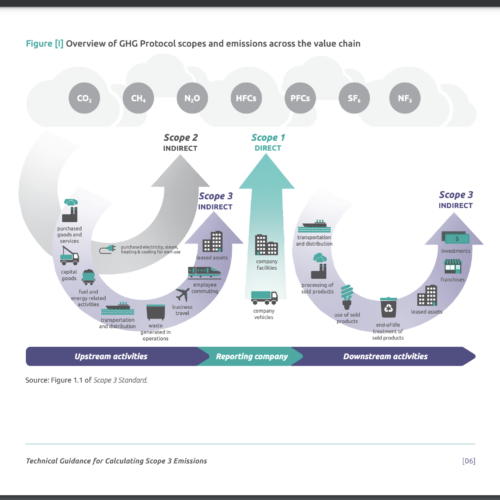As the world grapples with the urgent need to combat climate change, greenhouse gas (GHG) emissions have emerged as a critical focal point. Beyond the environmental implications, GHG emissions are inextricably linked to Environmental, Social, and Governance (ESG) reporting, which has gained immense prominence in recent years especially in the corporate world. Companies worldwide are not only under increased pressure to measure, report, and reduce their GHG emissions but also to align their strategies with ambitious net-zero target.
But how do businesses measure and manage their GHG emissions? One of the most widely used frameworks for GHG accounting and reporting is the Greenhouse Gas Protocol which categorizes GHG emissions into three scopes: scope 1, 2, and 3. These scopes help businesses to identify the sources and boundaries of their GHG emissions, as well as to prioritize their reduction strategies.
In this blog post, we will explain what scope 1, 2, and 3 emissions are, and in the subsequent posts, I explain in detail each scope and provide some examples of strategies to help reduce them.
What are Scope 1, 2, and 3 Emissions?
Scope 1, 2, and 3 emissions are a way of categorizing the different kinds of GHG emissions that a business creates in its own operations, and in its wider value chain. The term first appeared in the Greenhouse Gas Protocol of 2001 and today, scopes are the basis for mandatory GHG reporting in many jurisdictions and sectors.
• Scope 1 emissions are direct emissions from the sources owned or controlled by the company. These include emissions from fuel combustion in vehicles, boilers, furnaces, generators, etc., as well as emissions from chemical reactions in industrial processes, such as cement production, steel making, etc.
• Scope 2 emissions are indirect emissions from the generation of purchased energy. These include emissions from electricity, heat, steam, or cooling that a business buys from external providers to power its operations.
• Scope 3 emissions are all indirect emissions (not included in scope 2) that occur in the value chain of the reporting company, including both upstream and downstream emissions. These include emissions from activities such as purchased goods and services, products transportation and distribution, waste generated in operation, employee commuting, business travel etc.
The GHG protocol provides standards and guidance on how to measure and report emissions under each scope from the creation of inventory of emissions sources to calculation of actual emissions.
I hope I have helped you understand what scopes 1,2& 3 emissions are. In my next article, I will present some of the strategies that companies can implement to reduce emissions under each scope. If you would wish me to help you measure and report your emissions, please contact me.
Reference
https://ghgprotocol.org/sites/default/files/standards_supporting/FAQ.pdf,
https://ghgprotocol.org/sites/default/files/standards_supporting/FAQ.pdf
